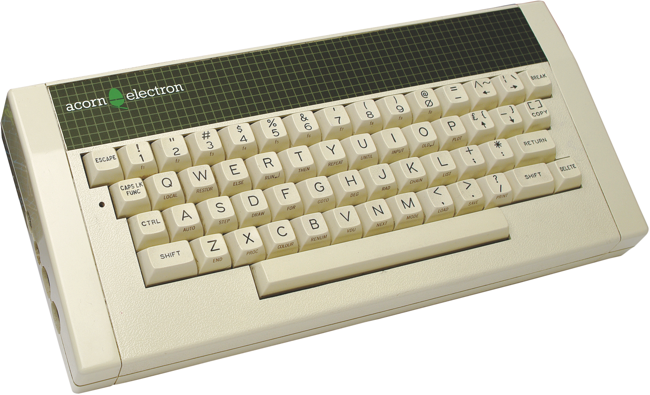Difference between revisions of "Acorn Electron"
(→Expansion) |
(→Expansion) |
||
| Line 23: | Line 23: | ||
Unlike the BBC Micro, the Electron had an expansion bus on the rear of the machine. Acorn released a series of expansion units to provide some of the hardware capabilities of the BBC micro. | Unlike the BBC Micro, the Electron had an expansion bus on the rear of the machine. Acorn released a series of expansion units to provide some of the hardware capabilities of the BBC micro. | ||
| − | [[ | + | [[Acorn Plus 1]] added an Analogue port, a Printer Port and two general purpose cartridge slots on the top. |
[[File:ElectronPlus1.jpg]] | [[File:ElectronPlus1.jpg]] | ||
| Line 30: | Line 30: | ||
| − | [[ | + | [[Acorn Plus Plus 2]] |
| − | [[ | + | [[Acorn Plus Plus 3]] |
Revision as of 12:51, 13 September 2020
The Acorn Electron was a low cost personal computer released in July 1983 as a budget alternative to the BBC Micro. A reported 300,000 orders were placed in the run up to Christmas that year, and it peaked as the third-best selling micro in the UK, with lifetime sales exceeding that of the BBC Micro.
The hardware of the BBC Micro was emulated by a single customized ULA chip designed by Acorn. It had feature limitations such as being unable to output more than one channel of sound where the BBC was capable of three-way polyphony and the inability to provide teletext mode. The machine architecture also imposed a substantial speed decrease on applications running from RAM, although ROM applications ran at the same speed.
Specification
- CPU : 6502A running at 0.5MHz to 2MHz
- RAM : 32Kb
- ROM : 32Kb
Graphics were similar to the BBC Micro, offering a set of graphic modes for different purposes. Missing was the BBC's Mode 7 'Teletext' mode.
Expansion
Unlike the BBC Micro, the Electron had an expansion bus on the rear of the machine. Acorn released a series of expansion units to provide some of the hardware capabilities of the BBC micro.
Acorn Plus 1 added an Analogue port, a Printer Port and two general purpose cartridge slots on the top.
One of the easiest modifications that could be carried out on the Acorn Plus 1 Expansion was to replace the Acorn Expansion ROM (v1.00) with the Slogger Expansion ROM (v2.02) which contained several useful utilities which provided the ability to map a joystick to key presses for joystick support in games that didn't directly support them and other features such as support for loading and saving ROM images into Sideways RAM.

